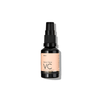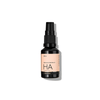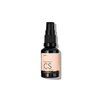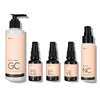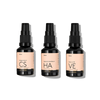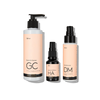Mastering Serums: How to Integrate Them into Your AM and PM Skincare Routine
Serums are skin powerhouses that can concentrate on active ingredients and make their way deep into the skin. Knowing how to integrate serums effectively in your morning and evening skincare routines maximises these ongoing works, which give you radiance and good health. This Fether guide helps you master the art of using serums—from collagen serum to hyaluronic acid serum and vitamin C serum—is to make sure you get all you can out of them.
Why You Need Serums in Your Skin Care

Serums are light, fast-absorbing liquids applied immediately after skin cleansing, although before moisturisers are applied. These are magic elixirs with concentrated formulations, thereby allowing serums to get into the actives and deliver right into the skin. For example, while moisturisers do basic work in hydrating and acting as barrier protection on the skin surface, serums are formulated to go deeper and have specific actions toward wrinkle reduction, hyperpigmentation, and dehydration.
Benefits of Using Serums:
Targeted Treatment: Serums address specific skin issues like fine lines, dark spots, and uneven texture..
Higher Potency: They contain a higher concentration of active ingredients than other skincare products.
Lightweight Formulation: They have a light construction that gives them the capacity for quick absorption into the skin, which means they can feature in multiple layers.
Boost Effectiveness: Serums can power up the effectiveness of your overall skincare routine when used appropriately.
Types of Serums
There are many forms of serums, all created to resolve various skin issues. Some of the most popular ones include:
Collagen Serum
Collagen serums improve skin elasticity and firmness. As we age, collagen production in the skin goes down; this can lead to sagging skin with wrinkles. A collagen serum refills this loss by enhancing the collagen content in the skin and eventually improving its appearance.
Hyaluronic Acid Serum
Hyaluronic acid is a natural component of the skin and holds water, which makes it plump and hydrated. Hyaluronic serums work for most skin types, more so for dry skin, providing intensive hydration but sans a heavy feel.
Vitamin C Serum
Vitamin C is a potent antioxidant that brightens the skin, reduces hyperpigmentation, and offers environmental protection. The application of a vitamin C serum in the morning helps protect your skin from UVA/UVB rays, pollution, and all other various agents that damage it.
How to Layer Serums into Your AM Skincare Routine
Your morning skincare sets a base for how your skin will be well-protected all day. Here's how to effectively include serums:
Step 1: Cleanse
Wash your face with a gentle cleanser to rid your face of all impurities that have settled into the skin overnight. Cleansing readies your skin to help in the absorption of the active ingredients of your serums.
Step 2: Vitamin C Serum
Use vitamin C serum in the morning for its protective effects. Just apply a few drops onto your fingertips and gently press it into your skin. It can neutralise free radicals and will enhance your natural glow.
Step 3: Apply Hyaluronic Acid Serum
Next, apply a hyaluronic acid serum to lock it in. Hyaluronic acid will keep your skin very well hydrated throughout the day. Apply it while the skin is still damp to give it the best opportunity to maximise the action of hydration.
Step 4: Moisturise
After your serums have been absorbed, apply a lightweight moisturiser that seals in all the goodness of your serums and provides more hydration.
Step 5: Sunscreen
The last but essential element in your AM routine is sunscreen. Apply broad-spectrum, at least SPF 30 anti-UV protection to lock it in and save your skin from damage due to incessant beating by harmful UV rays, which are responsible for premature ageing and skin damage.
How to Integrate Serums into Your PM Skincare Routine
Your evening skincare routine focuses on repair and rejuvenation. Here's how to integrate serums for maximum benefit:
Step 1: Cleanse
Wash the face with a mild cleanser to remove the makeup, dirt, and oil the skin picks up all day. Double cleansing with an oil-based cleaner, followed by a water-based cleaner, can work equally well.
Step 2: Apply the collagen serum.
The collagen serum is best applied at night, allowing your skin to repair while you sleep. Just apply a few drops to your skin and massage it gently. This will nourish your skin with elasticity, making the skin much firmer, thereby reducing fine lines and wrinkles.
Step 3: Hyaluronic Acid Serum
Hyaluronic acid serum at night keeps the hydration level, just like in the morning. Also, it works to serve as a conductor for the better absorption of subsequent products, thereby enhancing their efficiencies.
Step 4: Moisturise
Apply a richer, more nourishing moisturiser after serums have been absorbed to allow your skin to repair overnight. Seek out ingredients like ceramides and peptides that support skin barrier function.
Step 5: Eye Cream (Optional)
Now, if you use an eye cream, apply it after your serums and before your moisturiser. Eye creams may contain ingredients such as retinol for fine lines or hyaluronic acid, which can help in cases of puffiness.
How to Get the Most Out of Your Serums

Patch Test: Always perform a patch test with any new serum before adding it to your skincare routine to make sure it does not irritate your skin.
Consistency is Key: Apply serums consistently in your skincare routine every day.
Layering Order: From thinnest to thickest, it helps in the proper absorption and effectiveness of the serums.
Wait Time: Let it set completely—about a minute—to apply the next product. This prevents pilling and maximises the major benefits.
Avoid Overloading: While it can be tempting to use multiple serums, stick to two or three at a time to avoid overwhelming your skin.
Store Properly: Store serums in a cool and dark place if you want to retain their potency. Some serums, like vitamin C, require refrigeration.
Common mistakes to avoid
Overuse of Serums
More does not necessarily mean better. In most cases, excess serum may flood and irritate your skin. Responsible dosing, usually a few drops, should be observed for optimal action.
Skipping Sunscreen
If your serum has active ingredients like vitamin C, it is necessary to follow it up with some sunscreen. If you do not do this, you could end up undoing all the good work of the serum and end up damaging your skin eventually.
Mixing Ingredients That Should Not Go Together
Be careful about the ingredients in serums and other skincare products. Some of these ingredients, such as retinol and vitamin C, may not blend well with others and may irritate the skin. If in doubt, always seek advice from a dermatologist or professional skincare expert.
Conclusion
Including serums in your morning and night, skincare can be a game changer for your skin, focusing on specific issues and targeting an overall glow. With tips on why and how to use the right serums for your skin, it will help you achieve radiant, healthy skin. Just be consistent, patient, and considerate of your skin, and you will be well on your way to being a pro with serums.
For expert skincare tips and high-quality skincare products, follow @Fether. Your journey to flawless skin starts with us.
